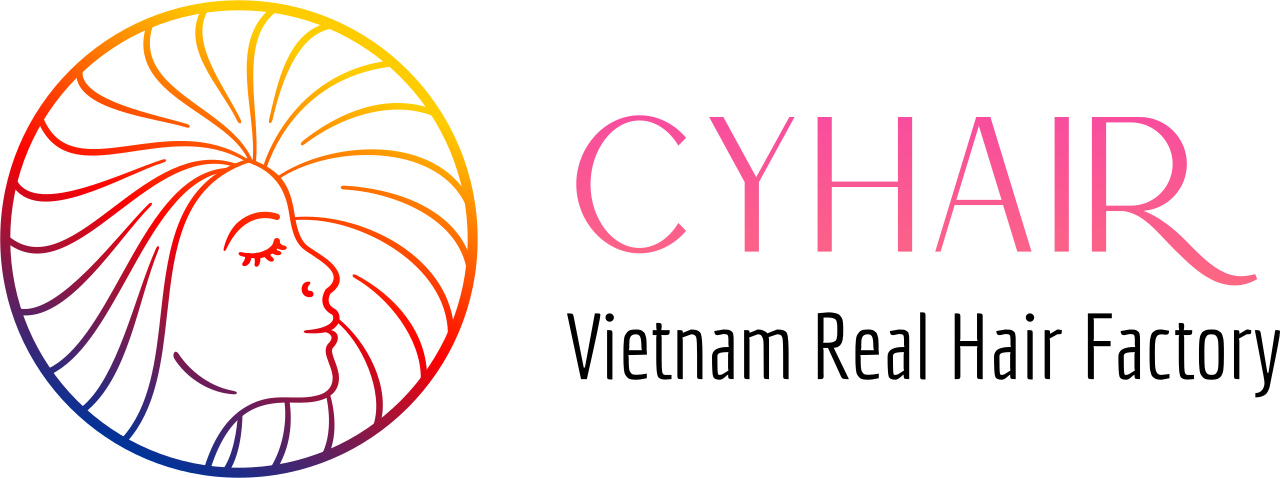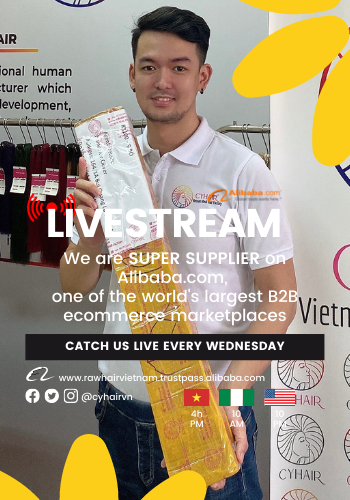Vietnamese hair vs Indian hair: What’s the distinction?
Main contents
Vietnamese hair vs Indian hair is one of the greatest and most popular hair types in the worldwide hair industry. These hairs have both positive and negative characteristics that hair sellers should evaluate before beginning to work with them.
Many consumers choose Vietnamese hair extensions, but there are also a number of hair dealers that prefer to offer Indian hair. Although each hair type does have its own set of upsides and downsides. This article’s comparison of Vietnamese and Indian hair can assist you in selecting the best hair for your wholesale hair company. With the help of this article, you’ll be able to obtain a better understanding of these hairs and choose which one is best for your organization.
Vietnamese and Indian hair have a number of similarities
Vietnamese hair vs Indian hair color
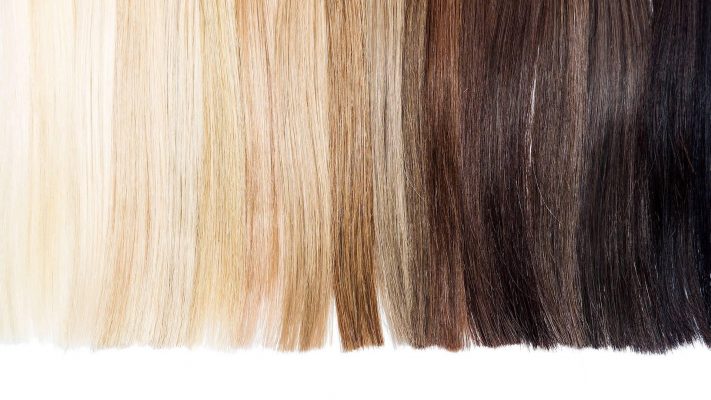
The color resemblance is the most prominent aspect that people may quickly perceive in these hairs. The dark color is the most noticeable difference between Vietnamese vs Indian hair. This hair comes in a variety of colors, from dark brown to jet black. Hairstylists may find it easier to integrate these hues in with natural hair. Furthermore, they may combine the natural dark tone with others to provide clients the most natural sensation.
In addition to dark color, Vietnamese and Indian raw hair allow you to recolor the hair yourself or have it recolored for you by the hair manufacturers. You may bleach and color your hair into the most difficult tones, such as blond 613, as long as it is certified.
Adaptability Hair from Vietnam compared hair from India
It is evident that both Vietnamese and Indian hair have a wide range of applications. Hair may be colored, curled, or styled in any way without difficulty. Customers may wear their hair in its natural state since it blends very well with their own.
This is one of the most noticeable features of both Vietnamese and Indian hair. Hair that has been heavily processed in factories, such as Chinese hair, will have a limited potential to be restyled.
The Cost of Vietnamese hair vs Indian hair
Finally, Vietnamese and Indian hair are both in the same pricing range. Vietnamese hair is somewhat more expensive than other types of hair since it is of higher grade. The price of hair from Vietnamese hair companies, on the other hand, is significantly lower. In reality, high-quality hair from manufacturers costs as little as 8.9 dollars each bundle.
Similarly, the cost of Indian hair starts at $8 per bundle, which is not much different from the cost of European hair. You may also learn more about the costs of Vietnamese hair from certain Vietnamese hair companies by reading Cyhair Review.
Vietnamese hair vs Indian hair: what’s the distinction?
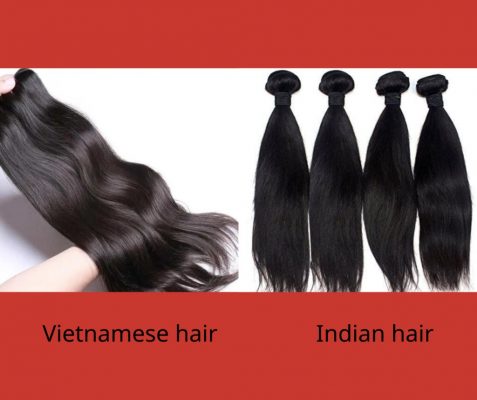
Compare and contrast the hair of Vietnamese and Indian people: Hair’s Origins
Both Vietnamese and Indian hair have their origins:
Vietnamese hair has a long history.
● Vietnam is one of the world’s most diverse, rich, and numerous sources of human hair. Hair was obtained from a lady from a highland ethnic group in Vietnam.
● Vietnamese hair is less impacted by sunlight due to natural circumstances and the tropical temperature, thus it is constantly healthy and lustrous.
● Furthermore, ethnic minority women usually use natural shampoos that are free of toxic chemicals, ensuring that each cuticle in their hair is constantly healthy, resulting in long-lasting Vietnamese hair. 3 to 5 years.
● Vietnam is one of the few places in the world that can supply 100% virgin human hair. This is one of the few characteristics that Vietnamese and Indian hair have in common.
Indian hair’s origins:
● India has several times more human hair than Vietnam, making it the world’s most populous country. India is also one of the world’s three most populated countries. As a result, they are able to supply an unusually large quantity of Indian Raw Hair.
● Indian hair, like Vietnamese hair, has been exposed to few chemicals, giving it a robust look. Indian hair, on the other hand, is able to tolerate the sun’s heat due to the hot and humid atmosphere.
In terms of product, Vietnamese hair varies from Indian hair
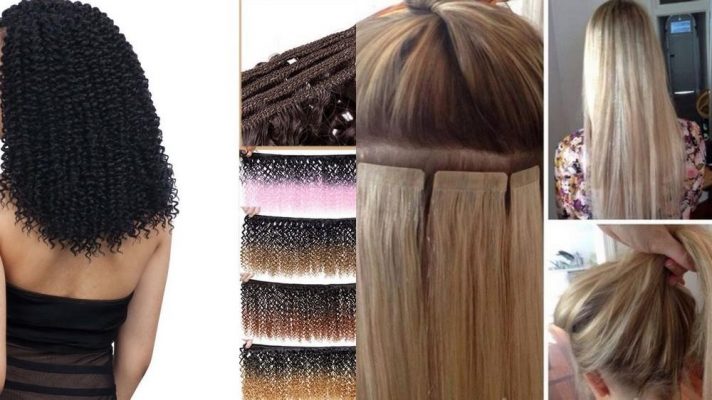
The variety of items accessible is a key advantage that might help you increase the number of individuals who buy your products. So, what’s the difference in terms of diversity between Vietnamese and Indian hair?
● You may find a wide choice of hairstyles, colors, and lengths from Vietnamese hair dealers on social media. Vietnamese hair makers now allow customers to choose their own hairstyle and color. Customers who buy Vietnamese hair will be allowed to design their own hairstyles and sell them under their own brand. As previously said, Vietnamese hair is simple to style since the natural hair is of exceptional quality and does not require processing prior to styling.
● Indian hair, on the other hand, will be confined to a few hairstyles. The reason behind this is that in order to develop a hairstyle, you must first have straight hair, yet Indian hair is naturally curly. So, once it’s been gathered, it’ll need to go through a pre-treatment phase to straighten the hair before it can be styled. Indians’ hair, which was already fragile after style, gets much weaker as a result of this. As a result, creating a new hairdo is challenging.
Vietnamese hair compared Indian hair quality
The primary distinction between Vietnamese and Indian hair is its quality. When comparing Vietnamese and Indian hair, it’s clear that Vietnamese hair is of higher quality. The origin of the hair is one of the reasons behind this. Natural products are used to care for Vietnamese hair, which originates from a few donors. Furthermore, Vietnamese people value their hair as a significant asset that they use to demonstrate their beauty and freshness. As a result, it’s simple to see why the hair is so excellent.
Nevertheless, Indian temples hair, often known as hairballs, is typically remy or non-remy hair of poor quality. In the hair factory, there has to be more intervention with chemicals and heat.
Vietnamese and Indian hair are reviewed by experts and customers
You should always be aware of the following two points:
Review of Vietnamese and Indian hair by customers
Obviously, when choosing between Vietnamese and Indian hair, the most discerning clients choose Vietnamese hair. Following is some feedback from customers who purchased Vietnamese virgin hair extensions.
Review of Vietnamese and Indian hair by experts
Hair dealers must base their decisions on three factors in order to sell the specific Vietnamese and Indian hair products they wish to market:
● Target market: hair dealers should use Vietnamese hair to service the market of high-income consumers, and vice versa.
● Production time: Indian hair always has a big number of goods available for rapid delivery. Vietnamese hair extensions take around 5-7 days to arrive, while hair products take roughly the same amount of time.
● Long-term profit: Vietnamese hair will almost certainly keep clients and increase earnings.
In Conclusion
One of the most crucial phases in the hair industry is to choose a reliable, high-quality Virgin Human Hair provider. Hair vendors/wholesalers in the Vietnamese hair market, in particular, must pick a reputed hair manufacturer that meets all of the following criteria: long-established, supplying high-quality hair at a fair price. Speedy production and delivery times are required, as well as a warranty policy that allows defective products to be returned.
Cyhair Factory is the first Vietnamese hair factory in Vietnam, providing wholesale hair vendors all over the world with 100 percent high-quality Vietnamese raw bulk virgin hair, weft hair, curly wavy hair extension, lace closure frontal, and human lace wigs, particularly in Africa (Nigeria, Ghana, South Africa,…).
Contact Us:
+ Whatsapp: +84387751243
+ Email: leeanh@cyhair.vn
